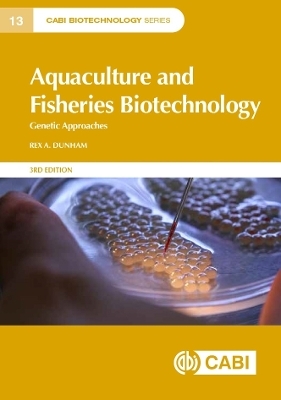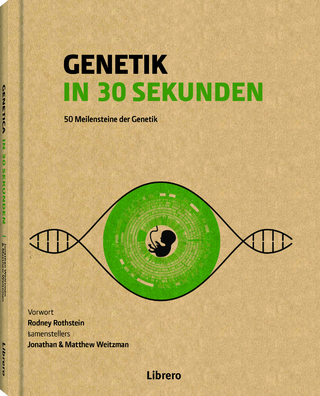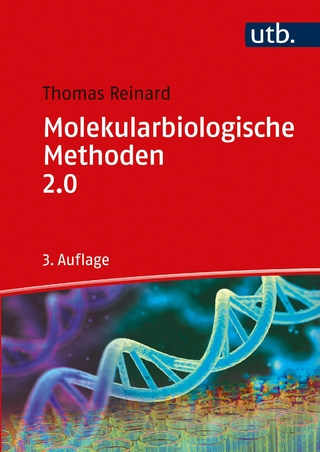
Aquaculture and Fisheries Biotechnology
CABI Publishing (Verlag)
978-1-78924-344-4 (ISBN)
The genetic improvement of fish for aquaculture and related fisheries has seen huge advances over recent years. Building upon the previous two editions of Aquaculture and Fisheries Biotechnology: Genetic Approaches, this 3rd edition offers a presentation of traditional selective breeding, modern genetic biotechnology, genomics, gene transfer and gene editing, and the latest developments in genetic biotechnology such as epigenetics, xenogenesis and genome-wide association study coupled with commercial application, the impact of government regulation and expectations for the future. It provides a firm grounding in relevant aspects of classical genetics, before focusing on particular aspects such as sex reversal and breeding as applied in aquaculture and fisheries. It also explores how more recent molecular genetics, genomics and biotechnology techniques can be used and combined in improvement programmes for fish and aquaculture species. A glossary explains the latest terminology used in biotechnology and genetics. This book will be useful for research scientists and students in marine biotechnology, aquaculture biotechnology, and fish genetics and breeding.
Rex Dunham is a Professor and Aquaculture Geneticist in the School of Fisheries Aquaculture and Aquatic Sciences at Auburn University. He received a B.S. from the University of Illinois in 1978, a M.S. and a PhD in Fisheries and Allied Aquacultures from Auburn University in 1979 and 1981. He has been on the faculty at Auburn University for 37 years. He also briefly served as Program Leader for the Genetic Enhancement and Breeding Program, ICLARM, Philippines, and as the President of the International Association of Genetics in Aquaculture From 2009-2012. His research team was the first to first demonstrate that selection works for the genetic improvement of channel catfish, the first to release genetically improved fish (catfish) in the United States, made the first transgenic fish in the United States, conducted the first outdoor environmental risk assessment and the first outdoor evaluation of performance of any transgenic animal in the world, generated the first xenogenic catfish (channel catfish males capable of producing blue catfish sperm, a form of stem cell surrogacy), accomplished the first repressible transgenic sterilization in fish, the first targeted gene insertion in the non-coding region of a fish and the first double CRISPR knockin of 2 transgenes in the non-coding region of 2 chromosomes. His research led to two major changes in the genetic type of fish used in the US catfish industry, the last resulting in the transformation of the US channel catfish industry into a majority hybrid catfish industry.
1: History of Biotechnology, Genetics and Selective Breeding in Aquaculture and Fisheries 2: Phenotypic Variation and Environmental Effects 3: Basic Genetics, Qualitative Traits and Selection for Qualitative Traits 4: Strain Evaluation, Domestication and Strain Selection 5: Population Size, Inbreeding, Random Genetic Drift and Maintenance of Genetic Quality 6: Gynogenesis, Androgenesis, Cloned Populations and Nuclear Transplantation 7: Intraspecific Crossbreeding 8: Interspecific Hybridization 9: Selection and Correlated Responses to Selection 10: Polyploidy 11: Xenogenesis 12: Sex Determination 13: Sex Reversal and Breeding, Monosex Populations and Sterility 14: Biochemical and Molecular Markers 15: Population Genetics and Interactions of Hatchery and Wild Fish 16: Genomics, Gene Mapping, Quantitative Trait Locus Mapping, Marker-assisted Selection, GWAS and Genomic Selection 17: Gene Expression 18: Gene-transfer Technology 19: Reverse Genetics, Gene Knockdown, Gene/Genome Editing and Induced Mutations 20: Combining Genetic Enhancement Programmes 21: Genotype–Environment Interactions 22: Commercial Application of Fish Biotechnology 23: Environmental Risk of Aquatic Organisms from Genetic Biotechnology 24: Genetic Sterilization to Reduce Environmental Risk of Genetically Altered Aquatic Organisms and Control Invasive Species 25: Food Safety and Consumer Acceptance of Transgenic Aquatic Organism 26: A Case Example: Safety of Consumption of Transgenic Salmon Potentially Containing Elevated Levels of Growth Hormone and Insulin-like Growth Factor 27: Government Regulation of Transgenic and Gene Edited Fish and Biotechnology Products 28: Strategies for Genetic Conservation and Gene Banking 29: Ethics 30: Constraints and Limitations of Genetic Biotechnology
| Erscheinungsdatum | 21.04.2023 |
|---|---|
| Reihe/Serie | CABI Biotechnology Series |
| Verlagsort | Wallingford |
| Sprache | englisch |
| Maße | 172 x 244 mm |
| Gewicht | 1749 g |
| Themenwelt | Naturwissenschaften ► Biologie ► Genetik / Molekularbiologie |
| Naturwissenschaften ► Biologie ► Limnologie / Meeresbiologie | |
| Weitere Fachgebiete ► Land- / Forstwirtschaft / Fischerei | |
| ISBN-10 | 1-78924-344-0 / 1789243440 |
| ISBN-13 | 978-1-78924-344-4 / 9781789243444 |
| Zustand | Neuware |
| Informationen gemäß Produktsicherheitsverordnung (GPSR) | |
| Haben Sie eine Frage zum Produkt? |
aus dem Bereich


